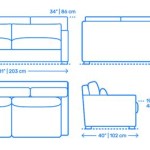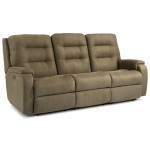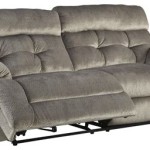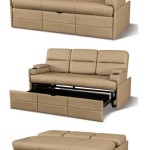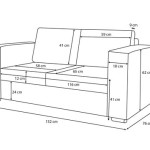How To Wash Your Sofa Cushion Covers
Sofa cushion covers are an essential part of any living room, providing comfort, style, and protection for the cushions themselves. Over time, these covers can become soiled with spills, dust, pet hair, and general wear and tear. Washing them regularly helps maintain their cleanliness, freshness, and overall appearance. This article will guide you through the process of effectively washing sofa cushion covers, ensuring they are properly cared for and restored to their best condition.
1. Check the Care Label
The first critical step is to examine the care label attached to the cushion cover. This label provides essential information about the fabric composition and recommended cleaning methods. It might specify if the cover is machine washable, hand washable, or dry clean only. Following these instructions is essential to avoid damaging the fabric and maintain the cover's integrity.
Pay close attention to the following details on the care label:
- Fabric Composition: Understanding the fabric type (cotton, linen, velvet, etc.) helps determine appropriate washing methods and water temperatures.
- Washing Instructions: Look for symbols indicating whether the cover can be machine washed, hand washed, or dry cleaned.
- Water Temperature: The care label will specify the maximum water temperature for washing. Using excessive heat can shrink or damage the fabric.
- Drying Instructions: The label may indicate whether the cover can be machine dried, air dried, or requires professional cleaning.
If you are unsure about the instructions or cannot locate the care label, it is advisable to consult a professional cleaner or refer to the manufacturer's website for detailed care guidance.
2. Prepare the Cushion Covers for Washing
Once you understand the care instructions, you can prepare the covers for washing. This involves:
- Removing the Covers: Carefully detach the covers from the cushions. Some covers might have zippers, buttons, or Velcro closures, while others may require gentle pulling or separating.
- Spot Cleaning: Before washing, address any visible stains or spills with a stain remover appropriate for the fabric. Always test the stain remover on a hidden area of the cover first to ensure it does not cause any discoloration.
- Zippers and Fasteners: Close all zippers, buttons, or Velcro closures to prevent snagging or damage during washing.
- Pre-Treating: For heavily soiled covers, pre-treating them with a laundry detergent or stain remover before washing can enhance cleaning effectiveness.
By taking these steps, you prepare the covers for optimal cleaning and help preserve their quality.
3. Washing and Drying
The washing and drying methods depend on the care label instructions. Here is a general guide for different scenarios:
Machine Washing
If the care label permits machine washing, follow these steps:
- Select the Correct Cycle: Choose a gentle or delicate cycle to avoid excessive agitation that could damage the fabric.
- Water Temperature: Use the recommended water temperature indicated on the care label. Cold water is generally safe for most fabrics.
- Detergent: Use a mild detergent specifically designed for delicate fabrics. Avoid harsh chemicals or bleach, which can damage the fabric.
- Load Size: Avoid overloading the washing machine to ensure proper cleaning and prevent damage to the covers.
Hand Washing
If the care label recommends hand washing, follow these steps:
- Fill a Basin: Fill a clean basin with cool or lukewarm water.
- Add Detergent: Use a gentle detergent designed for hand washing. Avoid harsh chemicals or bleach.
- Gently Wash: Submerge the covers in the water and gently agitate them with your hands. Avoid excessive squeezing or twisting.
- Rinse Thoroughly: Rinse the covers thoroughly under running water until all soap residue is removed.
Drying
Follow the care label's drying instructions. Some covers can be machine dried on a low heat setting, while others require air drying.
For air drying, follow these steps:
- Shake Excess Water: Gently shake the covers to remove excess water.
- Hang to Dry: Hang the covers on a clothesline or drying rack in a well-ventilated area away from direct sunlight. Avoid exposing the covers to extreme heat or direct sunlight, which can cause fading or damage.
- Flip Regularly: Regularly flip the covers during drying to ensure even drying.
- Ironing: If necessary, iron the covers on a low heat setting, using a pressing cloth to protect the fabric.
By following these washing and drying instructions, you can ensure that your sofa cushion covers are cleaned effectively and remain in good condition.

How To Clean Couch Cushions Like The Pros Bis

How To Wash Your Couch Cushion Covers

Diy How To Clean Your Sofa Save Money

How To Clean A Microfiber Couch It S Easy One Beautiful Home

How To Clean A Fabric Couch And Sofa Pro Housekeepers

How To Wash Your Couch Cushions Clean Mama

Cleaning A Non Removable Cushion Cover Simply Cushions

How To Clean Sanitize Couch Slipcovers Cushions And Throw Pillows Clorox

How To Wash Your Couch

How To Clean Non Removable Couch Cushions 6 Easy Steps The Cleaning Mommy

